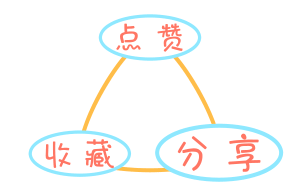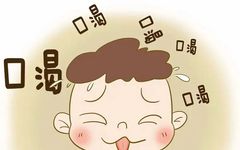Click the text above

Follow us~
Editor’s Recommendation
Thirst is closely related to the body’s fluids. Insufficient fluids or obstacles in fluid distribution can lead to thirst. The “Essentials from the Golden Chamber” offers many methods for treating thirst, among which salty and cold treatments are an important principle. This article explains the principles of salty and cold treatments for thirst and presents clinical cases using salty and cold herbs to treat thirst as the main symptom, illustrating the significant role of this method in the syndrome differentiation treatment of Yin deficiency with Yang excess and heat with fluid deficiency.. 【Abstract】Thirst is a common clinical symptom caused by insufficient fluids or obstacles in fluid distribution. The “Essentials from the Golden Chamber” provides many methods for treating thirst, with salty and cold treatments being a significant principle. This article explores the mechanisms of salty herbs (Mǔlì – Oyster and Wénhā – Clam) in alleviating thirst and presents clinical cases using these herbs to treat thirst as the main symptom, demonstrating the importance of salty and cold treatments in syndrome differentiation for Yin deficiency with Yang excess and heat with fluid deficiency. By explaining the principles of salty and cold treatments, which include subduing Yang and returning to Yin, guiding heat downward, moistening and moving fluids, clearing heat and generating fluids, dispersing heat and relieving thirst, this article aims to provide insights for clinical practice in treating thirst due to Yin deficiency. .Thirst is a common clinical symptom, first mentioned in the “Lingshu: Five Tastes”, referring to the sensation of dry mouth and throat. The term “thirst” is explained in the “Shuowen Jiezi” as: “to be exhausted. From water, it sounds like ‘he'”. This means that thirst arises when water is depleted, thus thirst is closely related to the body’s fluids. Insufficient fluids or obstacles in fluid distribution can lead to thirst, hence nourishing Yin and generating fluids, as well as regulating water metabolism, are the main principles for treating thirst. The discussions on thirst in the “Essentials from the Golden Chamber” are extensive, and the differentiation methods and treatment formulas provided have significant implications for later generations of physicians. Liu Yusan and others summarized the methods for treating thirst in the “Essentials from the Golden Chamber” into 12 categories, including methods for benefiting Qi and generating fluids, clearing heat and relieving thirst, warming and tonifying Kidney Yang, transforming Qi and relieving thirst, harmonizing Ying and Wei, dispelling dampness and relieving thirst, moving Qi and invigorating blood, benefiting Qi and tonifying the Spleen, warming the Lung and relieving thirst, transforming Qi and promoting urination, nourishing Yin and promoting urination, treating thirst with both internal and external methods, and dietary therapy for thirst. Among these, the salty and cold method of moistening and generating fluids is an important approach for treating thirst, and exploring the mechanisms of salty and cold herbs in the “Essentials from the Golden Chamber” can provide evidence and methods for clinical differentiation and treatment of thirst.。
【Abstract】Thirst is a common clinical symptom caused by insufficient fluids or obstacles in fluid distribution. The “Essentials from the Golden Chamber” provides many methods for treating thirst, with salty and cold treatments being a significant principle. This article explores the mechanisms of salty herbs (Mǔlì – Oyster and Wénhā – Clam) in alleviating thirst and presents clinical cases using these herbs to treat thirst as the main symptom, demonstrating the importance of salty and cold treatments in syndrome differentiation for Yin deficiency with Yang excess and heat with fluid deficiency. By explaining the principles of salty and cold treatments, which include subduing Yang and returning to Yin, guiding heat downward, moistening and moving fluids, clearing heat and generating fluids, dispersing heat and relieving thirst, this article aims to provide insights for clinical practice in treating thirst due to Yin deficiency. .Thirst is a common clinical symptom, first mentioned in the “Lingshu: Five Tastes”, referring to the sensation of dry mouth and throat. The term “thirst” is explained in the “Shuowen Jiezi” as: “to be exhausted. From water, it sounds like ‘he'”. This means that thirst arises when water is depleted, thus thirst is closely related to the body’s fluids. Insufficient fluids or obstacles in fluid distribution can lead to thirst, hence nourishing Yin and generating fluids, as well as regulating water metabolism, are the main principles for treating thirst. The discussions on thirst in the “Essentials from the Golden Chamber” are extensive, and the differentiation methods and treatment formulas provided have significant implications for later generations of physicians. Liu Yusan and others summarized the methods for treating thirst in the “Essentials from the Golden Chamber” into 12 categories, including methods for benefiting Qi and generating fluids, clearing heat and relieving thirst, warming and tonifying Kidney Yang, transforming Qi and relieving thirst, harmonizing Ying and Wei, dispelling dampness and relieving thirst, moving Qi and invigorating blood, benefiting Qi and tonifying the Spleen, warming the Lung and relieving thirst, transforming Qi and promoting urination, nourishing Yin and promoting urination, treating thirst with both internal and external methods, and dietary therapy for thirst. Among these, the salty and cold method of moistening and generating fluids is an important approach for treating thirst, and exploring the mechanisms of salty and cold herbs in the “Essentials from the Golden Chamber” can provide evidence and methods for clinical differentiation and treatment of thirst.。
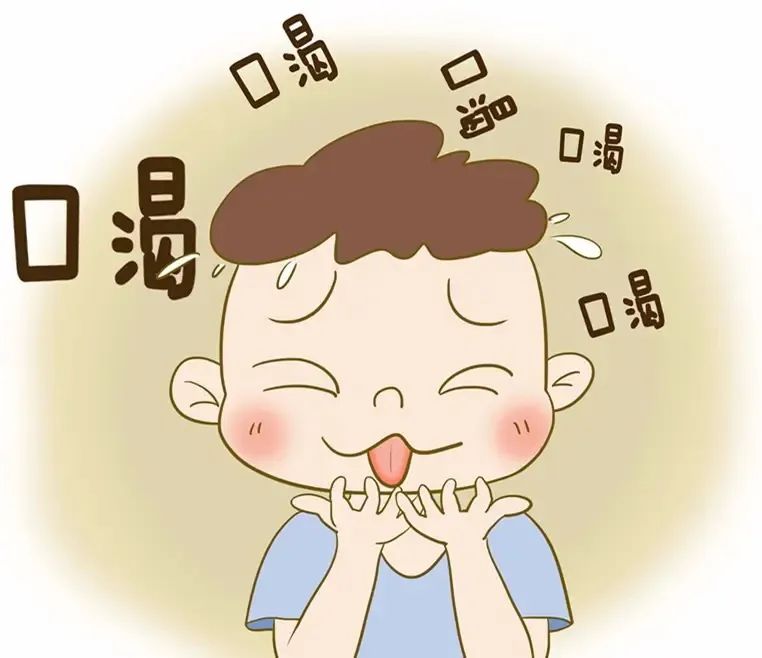

1 Salty and Cold Herbs for Treating Thirst in the “Essentials from the Golden Chamber”
 In the “Essentials from the Golden Chamber”, the following texts describe the use of salty and cold herbs for treating thirst. The “Baihe Huohuo Yin Yang Poison Disease Treatment” states: “For thirst due to Baihe disease, Guālóu Mǔlì Sǎn is the main treatment”; the “Xiaoke Xiaobian Buli Lin Disease Pulse Diagnosis and Treatment” states: “For thirst with an insatiable desire to drink, Wénhā Sǎn is the main treatment”; the “Vomiting, Hiccups, and Diarrhea Disease Pulse Diagnosis and Treatment” states: “For thirst after vomiting and a desire to drink water, Wénhā Tāng is the main treatment”. The salty and cold herbs mentioned in these texts are Mǔlì (Oyster) and Wénhā (Clam).
In the “Essentials from the Golden Chamber”, the following texts describe the use of salty and cold herbs for treating thirst. The “Baihe Huohuo Yin Yang Poison Disease Treatment” states: “For thirst due to Baihe disease, Guālóu Mǔlì Sǎn is the main treatment”; the “Xiaoke Xiaobian Buli Lin Disease Pulse Diagnosis and Treatment” states: “For thirst with an insatiable desire to drink, Wénhā Sǎn is the main treatment”; the “Vomiting, Hiccups, and Diarrhea Disease Pulse Diagnosis and Treatment” states: “For thirst after vomiting and a desire to drink water, Wénhā Tāng is the main treatment”. The salty and cold herbs mentioned in these texts are Mǔlì (Oyster) and Wénhā (Clam).
1.1 Mǔlì (Oyster)
Mǔlì, also known as Shēngháo (Oyster), is commonly found from the Yalu River in the north to Hainan Island in the south, and is a common marine mollusk. China is the earliest country to recognize the medicinal properties of oyster meat and shells. The Mǔlì used in the “Essentials from the Golden Chamber” should refer to the oyster shell.Mǔlì is first recorded in the “Shennong Bencao Jing”: “Taste salty, neutral, it is used for treating cold and heat, warming malaria, calming anger, relieving tension, treating mouse fistula, and women’s leucorrhea. Long-term use strengthens bones and joints, expels evil spirits, and prolongs life.” Although the “Shennong Bencao Jing” does not explicitly state that Mǔlì can relieve thirst, it clearly indicates that Mǔlì has a salty taste. Salty belongs to water, specifically entering the Kidney’s Yin, moistening and descending, and is good at eliminating all heat-related diseases. Salty can soften hardness and dissipate masses, and can eliminate phlegm and fluids, as phlegm and fluids are water that cannot be normally utilized by the body. Therefore, Mǔlì is known as the “Holy Medicine for Eliminating Phlegm”. Later physicians expanded on this basis. Tao Hongjing in the “Bencao Jing Jizhu” recorded: “Mǔlì, salty, neutral, slightly cold… can relieve thirst”, adhering to the theory of the “Shennong Bencao Jing”, indicating that Mǔlì has a salty taste and also pointing out its slightly cold nature, clarifying its function in relieving thirst. The “Fengshi Jinnang Miliu: Medicinal Properties” indicates the adverse effects of Mǔlì, stating that “long-term use can also cause coldness in the body”, supporting the cold nature of Mǔlì. Cold is Yin and descends, which can drain heat and overcome fire. It is the master of strengthening water, thus controlling Yang. Wang Ang in the “Bencao Beiyao” states: “Mǔlì… slightly cold to clear heat and nourish water, treating deficiency heat… promoting dampness and relieving thirst”, explaining that Mǔlì’s ability to relieve thirst is due to its capacity to nourish true Yin deficiency. Patients with Yin deficiency often crave cold drinks, but drinking does not relieve thirst, and they may experience a dry tongue and constipation. If bitter and cold medicines are used, it will only increase the heat symptoms. Therefore, it should follow the principle in the “Suwen: Zhi Zhen Yao Da Lun” that “those who are cold and have heat should take Yin” to nourish the deficiency of true Yin, thus controlling the excess heat, allowing Yin energy to recover and heat to retreat. Subsequently, physicians have further understood Mǔlì’s role in relieving thirst. For example, Zhao Tong in the “Bencao Jing Shuyi” states: “Mǔlì, thin layer resembling the lung, white in color and golden in texture, salty to soften hardness, cold to eliminate fire. It can also relieve thirst and promote the function of nourishing the Kidney.” Beyond its taste and properties, he explains Mǔlì’s morphology, color, and texture, combined with the theory of the five elements, indicating that it possesses the energy of metal and water, belonging to Yin, which can strengthen water and clear fire, subduing Yang.
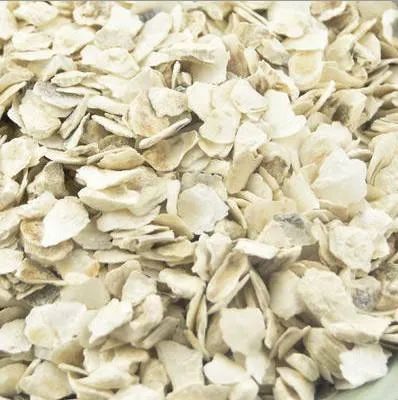
Mǔlì grows in seawater pools, with thick shells attached to rocks between the high and low tide lines, connected like houses or mountains, able to withstand the pressure of rising tides, and absorbing the essence of seawater, thus obtaining the nature of the sea and stone. Its salty and cold quality belongs to water, specifically traveling through the Kidney meridian, nourishing and moistening true Yin. Therefore, when true Yin is sufficient and Yin fluids are solid, it can subdue floating Yang, and the heat disease will naturally be eliminated.
1.2 Wénhā (Clam)
Wénhā, the shell of the clam from the family Veneridae, is mainly produced along the coastal areas of China, and the medicinal material is commonly referred to as Hǎiháo (Sea Clam Shell). In fact, there is a slight difference between sea clams and Wénhā. Currently, there are two theories: one distinguishes them by their living water environment, where clams and cockles are considered sea clams if they live in the sea and Wénhā if they live in freshwater; the other distinguishes them by whether their surface has patterns, where shells that have been worn smooth by waves and sand are called sea clams, while fresh shells with clear patterns are called Wénhā. The author agrees with the latter theory, as the “Mingyi Bielu” states that Wénhā “grows in the East China Sea and has patterns on its surface”, indicating that Wénhā grows by the sea and has patterned surfaces, thus sea clams and Wénhā are essentially the same type of organism, differing only in name.Wénhā is listed as a superior product in the “Shennong Bencao Jing”, with a salty and neutral taste, non-toxic, and is used for treating ulcers, five hemorrhoids, and growing in pools. Both Wénhā and Mǔlì in the “Shennong Bencao Jing” have a salty taste, thus both have the properties of transforming phlegm, softening hardness, and dissipating heat. However, Wénhā is not as fixed as Mǔlì, which adheres to rocks, but can move freely, opening and closing, inhaling and expelling seawater, thus its medicinal properties are lighter and more flexible than Mǔlì, possessing a purging nature. Li Shizhen in the “Bencao Gangmu” recorded that Wénhā “can relieve thirst and promote urination”, as the lung is the upper source of water. Wénhā enters the lung meridian, clearing lung heat above and promoting urination below, allowing heat to dissipate and thirst to cease. Furthermore, the “Changsha Yaojie” states: “Wénhā is salty and cold, clears metal, promotes water, relieves thirst and alleviates restlessness… this is its strength.” Thus, Wénhā possesses the heavenly energy, salty and cold in nature, which can overcome heat and promote dampness, effectively clearing heat, promoting water, and relieving thirst.
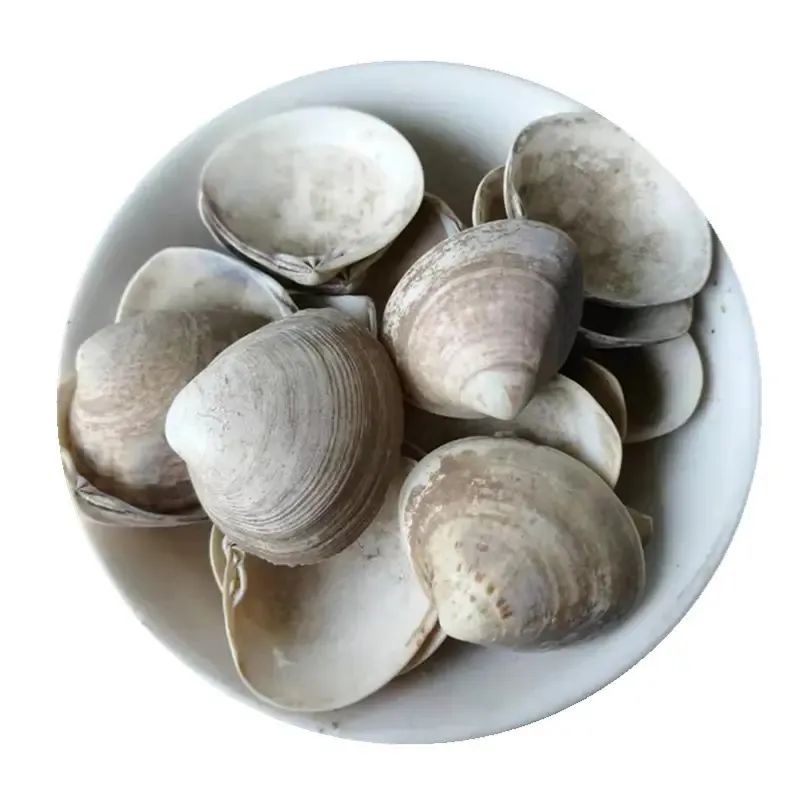

2 Mechanisms of Salty and Cold Treatments in the “Essentials from the Golden Chamber”

2.1 Subduing Yang and Returning to Yin, Guiding Heat Downward
The “Essentials from the Golden Chamber: Baihe Huohuo Yin Yang Poison Disease Treatment” states: “For thirst due to Baihe disease, Guālóu Mǔlì Sǎn is the main treatment.” Baihe disease often arises after major illnesses such as cold damage or deficiency, where residual heat remains, and the body is weak and unable to recover, leading to both Yin and Yang being deficient, but there can also be a predominance of either Yin or Yang. This text emphasizes thirst as the main symptom, thus Yin deficiency is the primary concern. Combining this with the text “Baihe disease, if not resolved in a month, turns into thirst, Guālóu wash formula is the main treatment”, if the Baihe wash formula does not alleviate thirst, it may be due to the severity of the illness and the lightness of the medicine, thus switching to Guālóu Mǔlì Sǎn to treat heat excess and fluid deficiency. The “Suwen: Zhi Zhen Yao Da Lun” states: “Heat is excessive internally, treated with salty and cold, complemented by sweet and bitter”, clarifying the method for treating heat. Heat is adverse to cold, thus treated with cold. To treat internal heat evil, salty and cold products are the main medicine, as salty flavor enters the Kidney. Without salty flavor, the fluids cannot deeply reach the Kidney, while the cold nature can assist in clearing the residual evil heat, restraining the deficient Yang. Complemented by “sweet and bitter”, the later omission of the word “cold” indicates the simultaneous combination of sweet and cold nourishing Yin and bitter cold to drain heat. Guālóu root is bitter and cold, capable of generating fluids and relieving thirst, while Mǔlì is salty and cold, able to guide heat downward. Guālóu Mǔlì Sǎn is based on the principles of the “Huangdi Neijing”, using Mǔlì as the main salty and cold ingredient, complemented by Guālóu’s bitter cold nature, both nourishing and calming, creating a harmonious synergy. This nourishes Yin and generates fluids, allowing Yang to descend, thus the Yin fluids can naturally generate roots, preventing the loss of fluids above, leading to the resolution of thirst. As Cao Yingfu stated: “Guālóu root clears and moistens, generating fluids, able to eliminate lung and stomach dryness heat and moisten the meridians… Mǔlì can lower the floating Yang… combining these two flavors into a formula treats both floating Yang and increases lung fluids, can thirst be unresolved?”It is worth noting that the Baihe wash formula states: “After washing, eat cooked cakes, do not use salt or fermented soybeans.” The cooked cakes are made from glutinous rice and wheat, similar to modern noodles, which can benefit Qi and nourish Yin, while also clearing heat and relieving thirst. Why can’t salt or fermented soybeans relieve thirst but instead become a taboo? Because salt and fermented soybeans are only salty in taste but not cold in nature, merely increasing the salty flavor, which can coagulate blood, injure Yin, and deplete fluids, increasing thirst. This is unlike Mǔlì, which has a heavy salty and cold quality that can guide heat downward, preventing upward depletion.
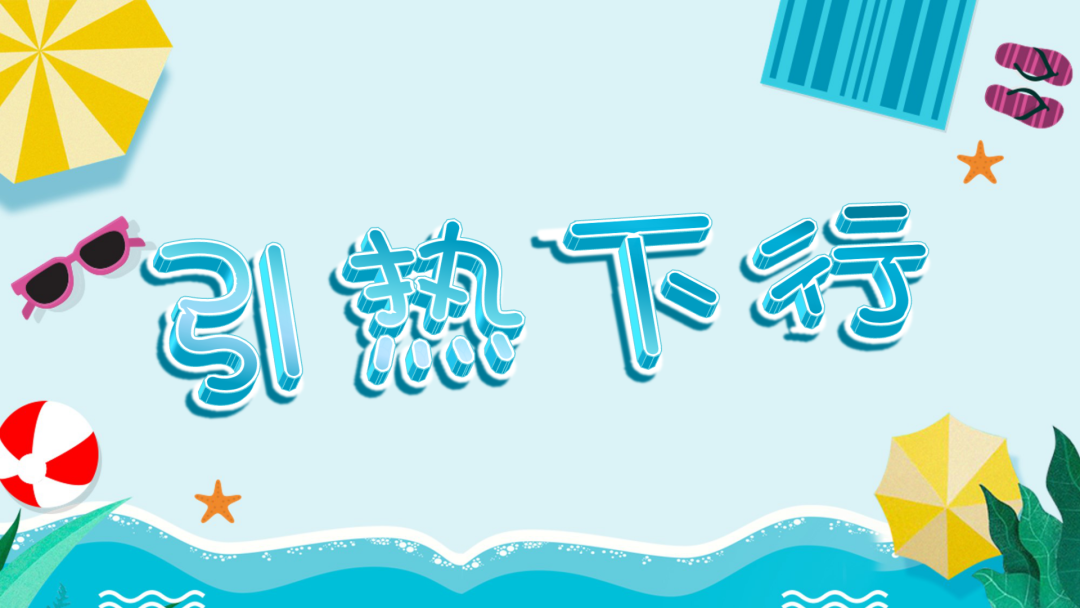
2.2 Moistening and Guiding Water, Clearing Heat and Generating Fluids
The “Essentials from the Golden Chamber: Xiaoke Xiaobian Buli Lin Disease Pulse Diagnosis and Treatment” states: “For thirst with an insatiable desire to drink, Wénhā Sǎn is the main treatment.” There has been much debate among physicians regarding the “Wénhā” in this formula. For example, the “San Yin Ji Yi Bing Zheng Fang Lun” believes that Wénhā is actually Wu Bei Zi (Galla Chinensis), and the “Yizong Jinjian” also notes under the Wénhā Sǎn in the “Zhengzhongjing Quanshu Shanchuan Lun” that “Wénhā is indeed Wu Bei Zi.” Wu Bei Zi is a gall produced on the leaves of the Rhus tree, primarily formed by the parasitic Wu Bei Zi aphid, also known as Wénhā. Wu Bei Zi has a sour, bitter, and astringent taste, and is effective in treating thirst due to deficiency heat. Therefore, some physicians believe that Zhang Zhongjing’s Wénhā refers to Wu Bei Zi. This theory can be referenced clinically, but Wu Bei Zi is a post-Han medicine, and scholars have verified that the Wénhā used by Zhang Zhongjing in the “Shanghan Lun” and “Essentials from the Golden Chamber” should be derived from the “Shennong Bencao Jing”, and should belong to the shell of the clam from the family Veneridae. Thus, this formula still uses Wénhā shell as the correct ingredient.The presence or absence of thirst in patients is a key point in differentiating whether there is heat in the body. If there is no heat evil in the body, there will be no thirst; if there is dryness and heat leading to thirst, the patient will naturally desire to drink water for relief. In this case, the patient has an insatiable desire to drink, indicating that water is stagnating in the lower burner, with heat and moisture trapped inside, and the fluids cannot evaporate and distribute in the mouth. The author believes that Zhao Yide’s interpretation of this text, “Wénhā… its taste is salty and cold, salty and cold originates from water, thus it can benefit water, its nature is moistening and guiding downward, which can retreat heat and treat thirst caused by heat” is the most precise. The Wénhā Sǎn uses Wénhā as the main ingredient, specifically for its downward guiding nature, with a salty and cold taste, which can moisten and relieve thirst while also counteracting the upward heat. It also enters the bladder to promote urination, allowing stagnant fluids to be expelled and generating fluids, thus alleviating thirst.The forms of Wénhā Sǎn and Guālóu Mǔlì Sǎn are also noteworthy. Both are powdered formulas, one of the earliest forms used in traditional Chinese medicine. Traditional powdered formulas have six major advantages, one of which is rapid onset. After the herbs are ground, the surface area increases, making the active ingredients easier to extract and absorb, thus acting quickly, as “powdered means dispersing, used for urgent diseases”. Additionally, Cao Yingfu believes that Guālóu Mǔlì Sǎn “must be pounded into powder” because “the disease has persisted, and the righteous Qi is weak, thus the medicine should be gradually introduced”, indicating that powdered formulas also protect the righteous Qi while expelling evil without harming the righteous. Therefore, grinding Wénhā and Mǔlì into fine powder to create a powdered formula is more beneficial for absorption and also protects the righteous Qi, jointly exerting the effect of relieving thirst.
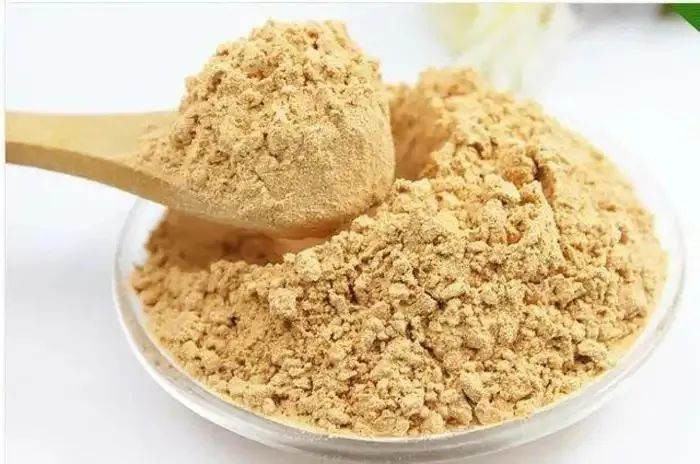
2.3 Clearing Heat, Dispersing Fluids, Relieving Thirst and Alleviating Restlessness
The “Essentials from the Golden Chamber: Vomiting, Hiccups, and Diarrhea Disease Pulse Diagnosis and Treatment” states: “For thirst after vomiting and a desire to drink water, Wénhā Tāng is the main treatment. It also addresses slight wind, tight pulse, and headache.” After vomiting, the patient must have injured fluids; if both water and heat are expelled with vomiting, thirst will arise, and if only water is lost while heat remains, it leads to an insatiable desire to drink, and drinking too much water without vomiting can lead to the risk of overflow. Wénhā Tāng is a modified version of the Dàqīnglóng Tāng, removing the cinnamon twig and adding Wénhā. Wénhā is salty and cold, able to clear the residual heat of the guest evil, allowing heat to dissipate and thirst to cease. Zhang Shiguan praised Wénhā’s role in this formula as “directly entering the Shaoyin, dispersing water and relieving thirst, being the holy medicine for dispersing evil and purging fluids in the Taiyang and Shaoyin meridians”; the Dàqīnglóng Tāng opens the ghost gate and cleanses the palace, sweating to disperse water and fluids, thus preventing the risk of overflow.Many physicians have questioned whether this text contains simplification errors. Ke Qin in the “Shanghan Lun Annotation” believes that this formula’s symptoms and the “Shanghan Lun: Differentiating Taiyang Disease” in section 141, which states “if the disease is in Yang, it should be resolved with sweating, but if cold water is used, the heat will be trapped and worsen the restlessness, leading to a desire to drink water without thirst” should be interchanged, indicating that Wénhā Tāng and Wénhā Sǎn should be swapped. The Japanese scholar Danbo Yuanshan agrees with this view, citing “thirst with an insatiable desire to drink, Wénhā Sǎn is the main treatment” as evidence. Li Jinyong in the “Essentials from the Golden Chamber Lecture” also pointed out that Wénhā Tāng should be used to treat “heat trapped and unable to dissipate, worsening restlessness, leading to a desire to drink water without thirst”, while Wénhā Sǎn should be used for “thirst after vomiting and a desire to drink water”. The author believes this argument is also quite reasonable, as the symptoms in the “Shanghan Lun: Differentiating Taiyang Disease” in section 38, which states “Taiyang wind… without sweating and feeling restless, Dàqīnglóng Tāng is the main treatment” are generally similar, indicating that if sweating is not achieved, heat is trapped internally, leading to restlessness. If Wénhā Sǎn is replaced with Wénhā Tāng, the only difference in the composition of the two formulas is the Wénhā and cinnamon twig. Furthermore, in the “Essentials from the Golden Chamber”, the phrases “thirst with an insatiable desire to drink” and “thirst with a desire to drink water” are similar in meaning, thus treating both with Wénhā Sǎn is also feasible.However, regardless of whether this text contains simplification errors, the salty and cold herbs in Wénhā have played a role in clearing heat, dispersing fluids, relieving thirst, and alleviating restlessness.
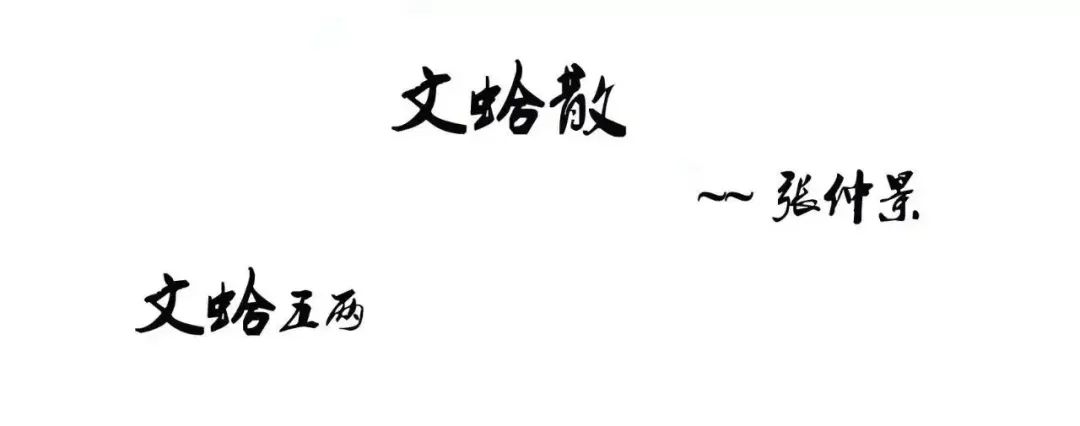

3 Clinical Case Study — Baihe Disease with Thirst as the Main Symptom
 Sun, female, 50 years old, retired worker. Initial diagnosis on October 19, 2019. The patient has experienced thirst for 3 years, with a strong desire to drink water, but drinking does not relieve thirst, especially at night, where severe thirst wakes her up, affecting sleep. During the day, thirst is less severe than at night. Accompanied by irritability and chest tightness, she feels restless and cannot walk or lie down comfortably, experiencing a sensation of heat throughout her body, but her temperature is normal, with poor appetite and fatigue. Urination is normal, but bowel movements are somewhat dry, occurring every 2-3 days. Fasting blood sugar and urinalysis are normal. After various treatments without effect, she suspected she had an incurable condition, feeling anxious and restless, with a confused mind. Tongue is dark red, with a yellow coating, and little fluid; pulse is thin and rapid. Traditional Chinese medicine diagnosis is Baihe disease, with a syndrome of lung and kidney Yin deficiency and internal heat with fluid deficiency. Treatment is aimed at draining heat, nourishing Yin, relieving thirst, and alleviating restlessness, with the prescription of Guālóu Mǔlì Sǎn combined with Bǎihé Dìhuáng Tāng, adding Wénhā: Tiānhuāfěn 30g, Shēngmǔlì 40g, Bǎihé 20g, Shēng Dìhuáng 30g, Wénhā 20g. 7 doses, decocted in water, taken once daily, morning and evening.On October 26, 2019, second diagnosis: family member reported that after taking 4 doses, the thirst symptom significantly reduced, and she slept well at night. After finishing 7 doses, her appetite gradually increased, and she felt stronger than before. Currently, her water intake has decreased, but is still slightly more than normal; tongue is dark red, with a thin yellow coating, and little fluid; pulse is thin and slightly rapid. The medicine has shown effect, and the same prescription is continued for another 7 doses. On November 2, 2019, third diagnosis: she no longer feels thirsty day or night, water intake is normal, appetite and sleep are good, and bowel movements are normal. Tongue is red with little coating, pulse is thin and wiry. She occasionally feels sad and wants to cry, which is due to prolonged illness and emotional depression, thus treated with herbs to soothe the liver, relieve depression, benefit Qi, and nourish Yin. Later, her son came for treatment and informed that she had finished the medicine and recovered, feeling happy and has not relapsed.Note: Baihe disease is similar to modern schizophrenia and neurosis. This patient experienced severe thirst for a long time, with an insatiable desire to drink, dark red tongue with yellow coating, and thin rapid pulse, indicating a pattern of Yin deficiency with heat symptoms. Yin deficiency leads to mania; the patient, having undergone various treatments without effect, became suspicious and anxious, leading to restlessness. The “Essentials from the Golden Chamber: Baihe Huohuo Yin Yang Poison Disease Treatment” states: “For thirst due to Baihe disease, Guālóu Mǔlì Sǎn is the main treatment.” Thus, the prescription of Guālóu Mǔlì Sǎn combined with Bǎihé Dìhuáng Tāng and adding Wénhā was given. The dosage of Mǔlì was the highest at 40g. Tong Xiaolin has used Guālóu Mǔlì Sǎn to treat thirst due to heat excess and fluid injury, with the dosage of Shēngmǔlì reaching 120g, which guides heat downward and nourishes Yin, having the effect of “strengthening water to control Yang” and also calming the mind and relieving restlessness. Combined with Wénhā’s salty and cold nature to moisten and guide water, nourish Yin, clear heat, and relieve thirst; Guālóu root (Tiānhuāfěn) is bitter and cold, generating fluids and relieving thirst; Bǎihé nourishes Yin and moistens the lung, and the “Shennong Bencao Jing” records that “Bǎihé… benefits urination and nourishes Qi”, also promoting urination without harming the righteous Qi; Shēng Dìhuáng has a sweet and cold taste, heavy and turbid, clearing heat and cooling blood, benefiting essence and filling marrow. The entire formula follows the principle in the “Huangdi Neijing” that “heat is excessive internally, treated with salty and cold, complemented by sweet and bitter”, aligning with the symptoms and matching the disease mechanism. Thus, after taking 7 doses, significant effects were observed, and continued treatment led to recovery.
Sun, female, 50 years old, retired worker. Initial diagnosis on October 19, 2019. The patient has experienced thirst for 3 years, with a strong desire to drink water, but drinking does not relieve thirst, especially at night, where severe thirst wakes her up, affecting sleep. During the day, thirst is less severe than at night. Accompanied by irritability and chest tightness, she feels restless and cannot walk or lie down comfortably, experiencing a sensation of heat throughout her body, but her temperature is normal, with poor appetite and fatigue. Urination is normal, but bowel movements are somewhat dry, occurring every 2-3 days. Fasting blood sugar and urinalysis are normal. After various treatments without effect, she suspected she had an incurable condition, feeling anxious and restless, with a confused mind. Tongue is dark red, with a yellow coating, and little fluid; pulse is thin and rapid. Traditional Chinese medicine diagnosis is Baihe disease, with a syndrome of lung and kidney Yin deficiency and internal heat with fluid deficiency. Treatment is aimed at draining heat, nourishing Yin, relieving thirst, and alleviating restlessness, with the prescription of Guālóu Mǔlì Sǎn combined with Bǎihé Dìhuáng Tāng, adding Wénhā: Tiānhuāfěn 30g, Shēngmǔlì 40g, Bǎihé 20g, Shēng Dìhuáng 30g, Wénhā 20g. 7 doses, decocted in water, taken once daily, morning and evening.On October 26, 2019, second diagnosis: family member reported that after taking 4 doses, the thirst symptom significantly reduced, and she slept well at night. After finishing 7 doses, her appetite gradually increased, and she felt stronger than before. Currently, her water intake has decreased, but is still slightly more than normal; tongue is dark red, with a thin yellow coating, and little fluid; pulse is thin and slightly rapid. The medicine has shown effect, and the same prescription is continued for another 7 doses. On November 2, 2019, third diagnosis: she no longer feels thirsty day or night, water intake is normal, appetite and sleep are good, and bowel movements are normal. Tongue is red with little coating, pulse is thin and wiry. She occasionally feels sad and wants to cry, which is due to prolonged illness and emotional depression, thus treated with herbs to soothe the liver, relieve depression, benefit Qi, and nourish Yin. Later, her son came for treatment and informed that she had finished the medicine and recovered, feeling happy and has not relapsed.Note: Baihe disease is similar to modern schizophrenia and neurosis. This patient experienced severe thirst for a long time, with an insatiable desire to drink, dark red tongue with yellow coating, and thin rapid pulse, indicating a pattern of Yin deficiency with heat symptoms. Yin deficiency leads to mania; the patient, having undergone various treatments without effect, became suspicious and anxious, leading to restlessness. The “Essentials from the Golden Chamber: Baihe Huohuo Yin Yang Poison Disease Treatment” states: “For thirst due to Baihe disease, Guālóu Mǔlì Sǎn is the main treatment.” Thus, the prescription of Guālóu Mǔlì Sǎn combined with Bǎihé Dìhuáng Tāng and adding Wénhā was given. The dosage of Mǔlì was the highest at 40g. Tong Xiaolin has used Guālóu Mǔlì Sǎn to treat thirst due to heat excess and fluid injury, with the dosage of Shēngmǔlì reaching 120g, which guides heat downward and nourishes Yin, having the effect of “strengthening water to control Yang” and also calming the mind and relieving restlessness. Combined with Wénhā’s salty and cold nature to moisten and guide water, nourish Yin, clear heat, and relieve thirst; Guālóu root (Tiānhuāfěn) is bitter and cold, generating fluids and relieving thirst; Bǎihé nourishes Yin and moistens the lung, and the “Shennong Bencao Jing” records that “Bǎihé… benefits urination and nourishes Qi”, also promoting urination without harming the righteous Qi; Shēng Dìhuáng has a sweet and cold taste, heavy and turbid, clearing heat and cooling blood, benefiting essence and filling marrow. The entire formula follows the principle in the “Huangdi Neijing” that “heat is excessive internally, treated with salty and cold, complemented by sweet and bitter”, aligning with the symptoms and matching the disease mechanism. Thus, after taking 7 doses, significant effects were observed, and continued treatment led to recovery.
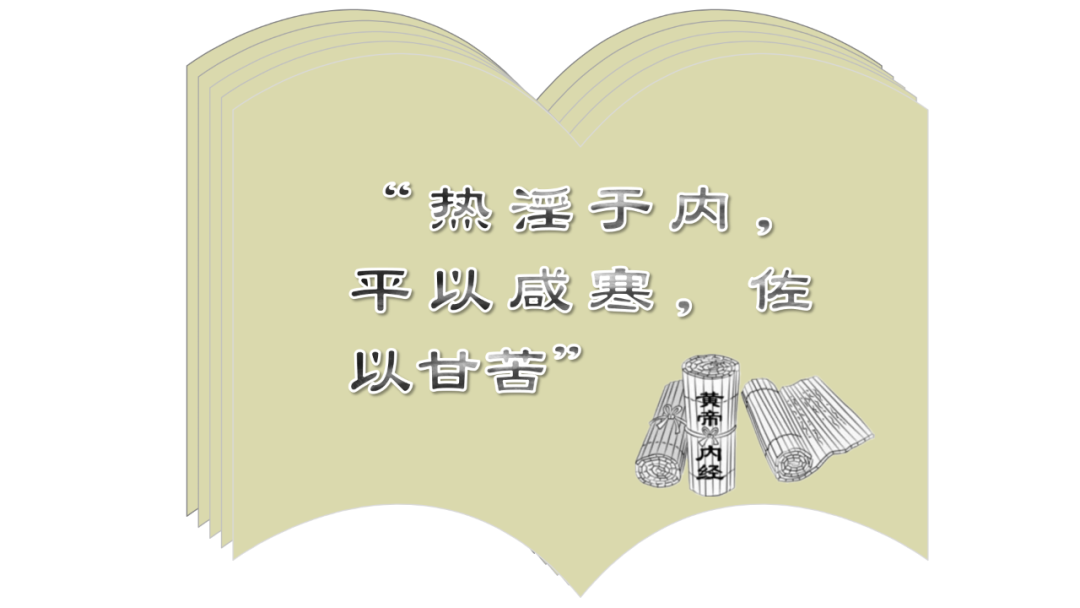

4 Conclusion
 Thirst is a common subjective symptom in clinical practice, usually caused by a lack of fluids or obstacles in fluid distribution. It is important to distinguish between “thirst” and “dry mouth” in the “Essentials from the Golden Chamber”: the two have different connotations. Thirst is a subjective desire to drink water, while dry mouth may feel dry but does not necessarily lead to a desire to drink water, or there may be a desire to drink but an inability to do so, and although it is called dry mouth, it does not necessarily mean a lack of fluids in the mouth. Zhang Zhongjing analyzes thirst in the “Essentials from the Golden Chamber”, describing “thirst with a desire to drink water, insatiable thirst, dry throat, dry mouth”, which requires us to correctly understand the meaning of the sage and find the cause of thirst, thus selecting the correct method. The “Essentials from the Golden Chamber” offers many methods for treating thirst, among which salty and cold treatments are an important principle. Mǔlì, Wénhā, and other salty and cold products possess the effects of nourishing Yin, subduing Yang, generating fluids, relieving thirst, and clearing heat, showing significant efficacy in treating thirst due to Yin deficiency. As times change, although the spectrum of human diseases has undergone significant changes, in clinical practice, when faced with diverse clinical manifestations, starting from thirst and combining with other symptoms of the patient, using formulas such as Guālóu Mǔlì Sǎn, Wénhā Tāng, and Wénhā Sǎn will undoubtedly provide important insights for diagnosing and treating neuroses, thyroid nodules, or diabetes.Editor’s Note: This article was published in the “Journal of Shandong University of Traditional Chinese Medicine”, 2022, Issue 2. To view the entire issue, please click the “Read the Original” link below.Editor: Zhang Yi1 Some images used in this article (or original images before processing) are sourced from the internet. If there are any suspected infringement issues, please confirm and contact us, and they will be deleted.
Thirst is a common subjective symptom in clinical practice, usually caused by a lack of fluids or obstacles in fluid distribution. It is important to distinguish between “thirst” and “dry mouth” in the “Essentials from the Golden Chamber”: the two have different connotations. Thirst is a subjective desire to drink water, while dry mouth may feel dry but does not necessarily lead to a desire to drink water, or there may be a desire to drink but an inability to do so, and although it is called dry mouth, it does not necessarily mean a lack of fluids in the mouth. Zhang Zhongjing analyzes thirst in the “Essentials from the Golden Chamber”, describing “thirst with a desire to drink water, insatiable thirst, dry throat, dry mouth”, which requires us to correctly understand the meaning of the sage and find the cause of thirst, thus selecting the correct method. The “Essentials from the Golden Chamber” offers many methods for treating thirst, among which salty and cold treatments are an important principle. Mǔlì, Wénhā, and other salty and cold products possess the effects of nourishing Yin, subduing Yang, generating fluids, relieving thirst, and clearing heat, showing significant efficacy in treating thirst due to Yin deficiency. As times change, although the spectrum of human diseases has undergone significant changes, in clinical practice, when faced with diverse clinical manifestations, starting from thirst and combining with other symptoms of the patient, using formulas such as Guālóu Mǔlì Sǎn, Wénhā Tāng, and Wénhā Sǎn will undoubtedly provide important insights for diagnosing and treating neuroses, thyroid nodules, or diabetes.Editor’s Note: This article was published in the “Journal of Shandong University of Traditional Chinese Medicine”, 2022, Issue 2. To view the entire issue, please click the “Read the Original” link below.Editor: Zhang Yi1 Some images used in this article (or original images before processing) are sourced from the internet. If there are any suspected infringement issues, please confirm and contact us, and they will be deleted.
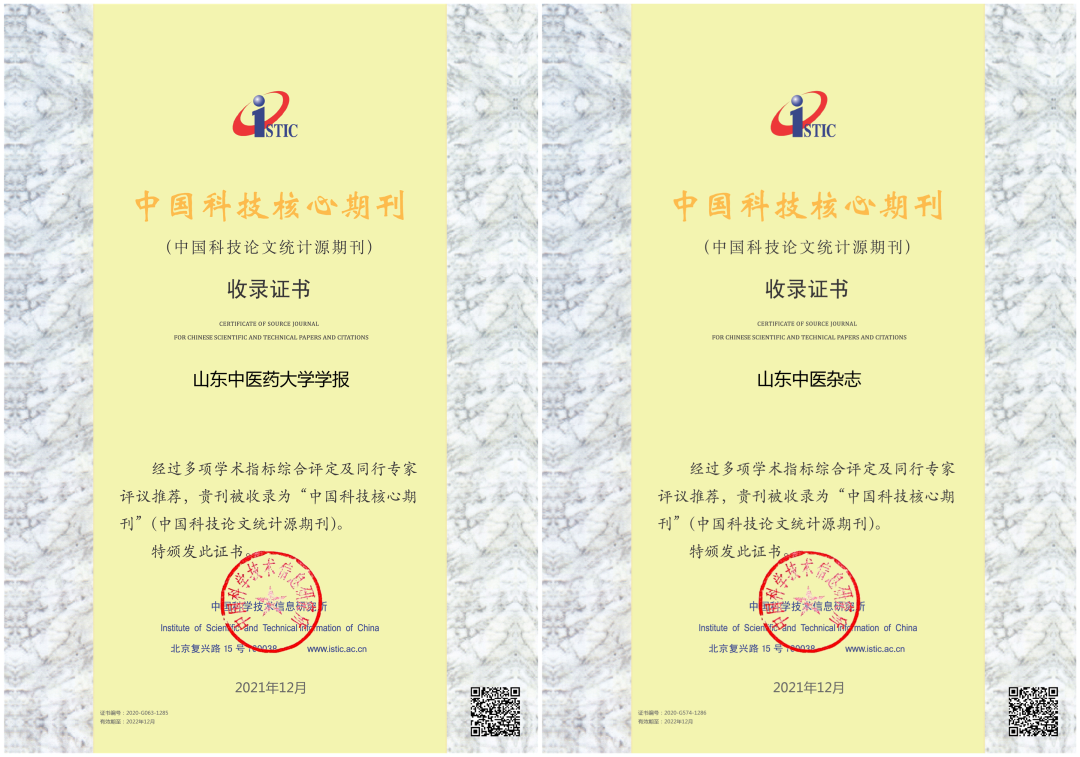

Follow Traditional Chinese Medicine
Enjoy Health
